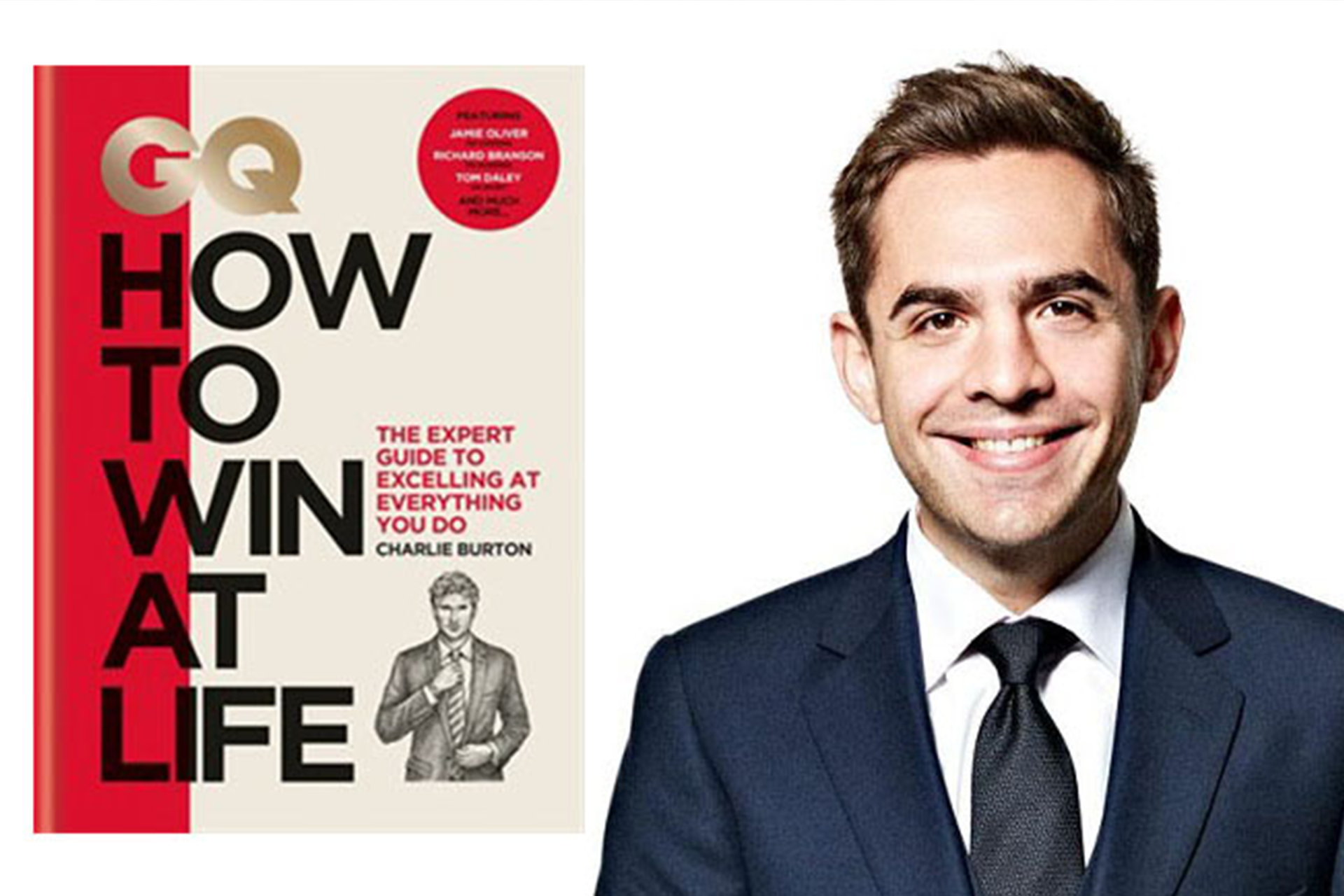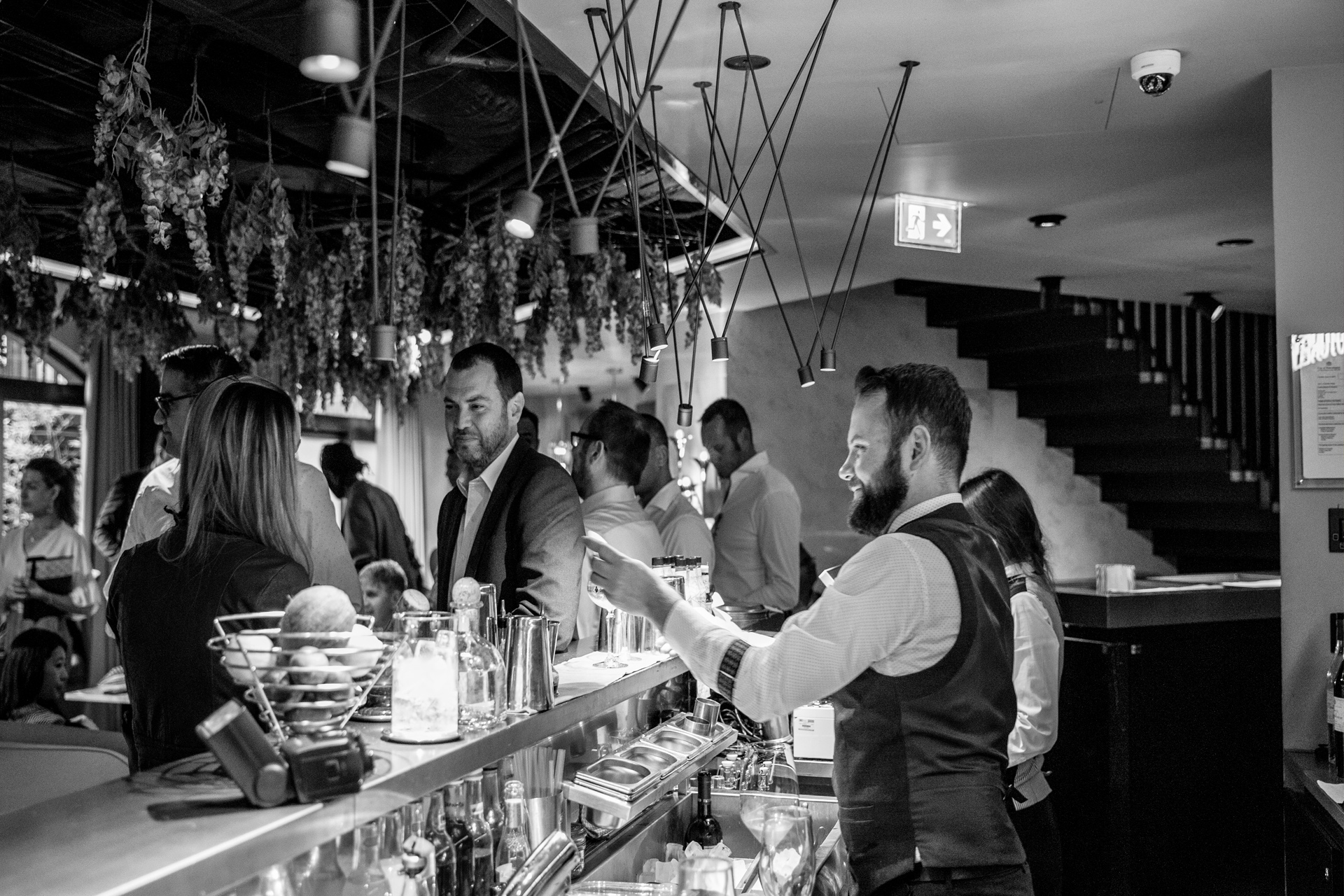May 1st: Mayfair Business Breakfast with Charlie Burton, Senior Commissioning Editor of GQ Magazine.
On May 1st we were delighted to host GQ’s Commissioning Editor Charlie Burton to Hay Hill and hear about how he wrote his book “How to Win at Life”.
Here is the transcript of the talk at the Like Minds Business Breakfast conducted by Marlow FM radio presenter Sam Sethi, with Charlie at the club.
Sam Sethi: Charlie, first of all, please tell everybody who you are and what you actually do for a living?
Charlie Burton: Sure. I’m the senior commissioning editor at GQ magazine. So it’s a combination of writing and editing, I look after the front section of the magazine and rides, features, and also contribute to our website, run events, that kind of thing. One of the columns in the front section of the magazine is a column called “Bring Your A Game”, which is a skills column. It’s about how to do something the reader might want to do to the very highest level. And it’s usually based on an interview with an expert in the field.
It’s something we started a couple of years ago and it’s quite popular. However what we were finding was because it was only a little sidebar in the magazine, and we were talking to these fascinating people, we often didn’t have room on the page to put in all of their insights.
So we thought, well, maybe this could be the basis of a book and so we took those columns and expanded to them with all the stuff that we couldn’t fit in and then also came up with a whole load of new ones. So it’s a book that spans everything from work and career from food and drink to fashion, which is obviously one of the key things we discuss at GQ.
I suppose one thing to say is that this isn’t how to win at life, according to Charlie Burton, I think no one would want to read that! It’s a more journalistic thing, it’s interviews with everybody from Richard Branson, on business to Jamie Oliver, on how to cook a steak to Tracey Emin on how to hang art in your home. It’s a quite eclectic reportorial project, I suppose.
SS: Having read it it’s a great book for dipping in and dipping out of, you don’t have to read it sequentially. Did you have a favourite interviewee or interviewer?
CB: We had lots of great people, that were generous enough to spare their time. I spoke with Richard Branson, Jamie Oliver, people like that. Tom Daley was lovely. He did an interview for us about how to dive into a pool with finesse as a how to do it, how to do a simple dive. All of the things in the book are illustrated. And as with things like that they’re quite technical illustrations so I had to send reference photographs to the illustrators.
They had to get it right so I found myself in this absurd situation when I was on holiday, the book was quite full on as I wrote it over about nine months and I was working on it on holiday and I was trying to do the poses that went with the diving position Tom had described. So I got my wife to take a photograph of me doing them and texted them to Tom saying, “Is this right?” And he would say, put your arm a bit higher or put your leg left a bit. So he was pretty involved in it. And I sent him the printed proofs to check because it was such a technical thing and he said, “This is great, but you’ve made a few typos”.
What was lovely was people were generous enough to really care about it. I think as a result, there’s a lot in there that I learned. People like Richard Branson, for instance, who runs an empire of 90,000 people and 400 companies. He was one of my heroes for a long time ao it was fantastic to talk to him. He revealed halfway through the call that he was lying in his hammock during the interview on Necker Island. And if that’s not someone who’s winning at life, I don’t know what is!
SS: He did say that never to work in an office, put someone else in an office and then go and do whatever you want to do elsewhere. So I think he’s done it right.
CB: Yeah if you work at Virgin you have unlimited holiday. They say you must take at least 25 days holiday.
SS: One of the things I loved about reading the book was learning my mistakes of life.
For example, after 20 years of eating Sushi, I realised I ate it the wrong way! You’re meant to eat it upside down.
CB: I interviewed Nobu Matsuhisa, who runs the Nobu chain of restaurants. And I wanted to ask him about what people do wrong and, and he’s said actually a lot of people do a lot of things wrong! People use the ginger as a garnish when actually it’s a palate cleanser.
But the thing I found most interesting is, as you say, if you’re having Nigiri Sushi, that you are supposed to dip the fish, fish side down into the soy sauce, otherwise, the rice will break up. Then put it into your mouth upside down. Because actually, you want your tongue to get the hit of flavour of the fish.
SS: Yeah. And the other one I like is never cross your chopsticks.
CB: There’s a lot of etiquette around it, the thing is not to mix the wasabi into the soy sauce, which apparently is considered a real no-no.
SS: So let’s take a step back you writing these columns? Who was it? Was it yourself? Who said, Look, I really want to write about your wife on some third party who gave you the Genesis to write the book?
CB: What can I say? It just came out of realising we had too much to put in the magazine. My wife certainly encouraged me when I had the idea. She was pretty instrumental. She was actually it was she was quite generous because we were getting married at the time. And for about six months, she basically let me off wedding planning to write the book in the evenings. And then once I finished it said, right now you can take over with this!
SS: So how long did the book actually take about nine months or so? What was it that took long?
CB: It’s quite labour intensive in the sense that there are around 75 entries in the book and each of those has an expert. So you’re finding that expert, interviewing them, trying to do justice to their insights and how you write it up. Then there’s all the illustrations, each of the entries has five illustrations, which are often quite technical. So there’s lots of back and forth on illustration. It was just quite a lot of moving parts.
SS: Is there an interviewee that you didn’t get that you wanted?
CB: There probably weren’t, I’m not being coy. I can’t think of anyone in particular, however, what I thought was interesting, and obviously, we have lots of household names but there’re also people in the book who maybe I hadn’t heard of before, and maybe you haven’t heard of, who are nonetheless the real authority in their field.
For example, there’s a guy who used to be the chief technology officer at Microsoft, a guy called Nathan Myhrvold, who is this incredible polymath. He’s a big tech guy, but he’s also discovered more T-Rex skeletons than anyone in history. And he’s also a world BBQ champion. He did the interview on how to barbecue like a pro. So his whole thing around that was about taking a scientific approach to barbecuing. It’s you know just little tweaks to make your barbecuing much better.
SS: Like what? Without spoiling the book!
CB: Things like putting a silver lining on the inside of your barbecue, so it generates the heat across the whole environment. His point with that is that heat is infrared, so what you want to do is have a reflective surface inside the BBQ so the food effectively sees more infrared, because it’s bouncing back and forth. The sweet spot in which you cook is therefore bigger.
SS: So is there another book inside you Charlie? Is there something that you’re itching to get out?
CB: Not immediately, because it did take a lot of a lot of time if I was doing something else. I’m a big Bob Dylan fan so to do a Bob Dylan book would be great.
SS: What was your favourite chapter in the book?
CB: The book is eight chapters and the final one is called the unexpected. And it’s things which hopefully, you won’t have to use but nevertheless, we asked the real experts on how to do them. So we have Andy McNabb, on how to survive a kidnapping. We have
a guy who teaches the police forces in the states how to escape from sinking vehicles and what to do if your car plunges over the edge into the water.
But part of the genesis of this book was I had always really enjoyed teaching myself stuff out of books. Some of it quite geeky, such as when I was younger, I used to really love magic tricks. I read lots of conjuring books. And I taught myself things like how to play the harmonica, and how to play the guitar, stuff like that.
I also enjoyed buying books, which taught you things you might not necessarily have to ever use. But I remember reading a book on stage hypnotism, I’ve never even tried to do it but I think it’s intrinsically quite interesting. So I thought that maybe the final chapter could be a bit like that. It’s stuff that hopefully you won’t have to use but still be interesting to see how you might do it if you had to.
SS: Yes, the 30 seconds that you have to open a window, after which they won’t open was quite scary, actually. When the car goes into the water, the outside pressure means the door won’t open after 30 seconds, so you’ve only got 30 seconds to open the window. I was thinking, I’ve got electric windows, how am I going to do this! The buttons not going to work.
In the book, it says you can get to a certain point where the outside pressure meets the inside pressure and you can have a nanosecond in which you can open the door however I think I’ll be panicking before that!
CB: Their main point is don’t phone the police, you just have to get out of the car really. And if it does start to go under the last pocket of air is in the back. So get to the back, there’s often a catch in the boot you can get to which will open it up.
SS: Let’s find something else. You have an interest in Bond, your current GQ contributors write a lot about it.
CB: I do write quite a few different things for GQ and one of the things we know from looking at the stats on the on our website is that James Bond’s a big thing for us. So we thought we should do a column linking the two, basically pieces about the clothes and things you can find in the Bond films.
SS: Would this book be for men or women? Or both? What would you say? Is it a man thing to like to learn how to fix things? Or is it or do women want to learn the same thing?
CB: It’s pretty gender neutral. I mean just because GQ is a men’s magazine I suppose the way we package it up is marketed a bit more towards men. But beyond the fashion content, which is quite male-specific, I don’t think it’s particularly gendered.
Both in terms of the stuff inside it, and also who we spoke to was a pretty even mix, I would say.
SS: Let’s take a step back before you’re at GQ, Wired Magazine, does this mean you’re a gadget aficionado?
CB: Not like you! I wrote the culture section for Wired, and one of the things that Wired has always done, which I love, is to take a practical hands-on approach and talk to, well tell people, about how to do those things. And so when I was thinking about this book and the column originally, I thought what if you could take that same degree of seriousness, to more lifestyle things.
SS: So what was Tracy Emin like to interview?
CB: Yeah, she was great, she gave me an interview about how to display artwork. And she’s got really forthright views on that, a lot of artists who quite rightly will say, you know, there’s not a right way or wrong way to do this. But she’s been in the industry at such a high level for quite a while, she knows exactly what galleries do wrong and what they get right. I learned a lot from her.
SS: My last couple of questions; What would you suggest to people, if they wanted to write a book? What’s the process they should go through? Is it just say, no don’t do it? Or is there something that you would change, now you’ve done the book, now I’ve got this knowledge in my back pocket, I found the right publisher, I set about it the right way or the wrong way.
CB: If anything could change I’d probably give myself a little bit more leeway to do three or four standard layouts in the book, without going into too much detail on it. And I could have done with one, which was just a bit longer.
There were a couple of interviews, William Hague for one, who regardless of your politics, a lot of people see him as one of the great Commons orators of his generation. He gave me a fantastic interview about public speaking, which actually wasn’t something he’d really spoken about in that way before. I wish I had more space to include more of it really
One nugget he suggested that I loved was having a piece of sugar before you present. Just that little piece. He says it warms up the larynx and it gives you more because you can achieve greater volume.
SS: Georgia Smith is one of my heroes. I don’t know if people know George Smith, many will. She’s a brilliant, brilliant musician and artist. What was she like to interview for the book?
CB: She was fascinating, there’s a chapter called “Showing Off” and one of the things in there is how to sing like a pro. But again, it’s very practical stuff. We spoke to her and also her voice coach. And she described things like knowing how to breathe a singer’s breath.
You imagine you’ve got a balloon behind your navel and a straw going from your mouth down into that balloon and you’re inflating that balloon and that’s where the breath comes from. But that’s also a transferable skill if you’re public speaking, or if you’re on stage and need to project your voice.
Charlie Burton’s book “How to Win at Life” is available in all good bookshops and available online here.




